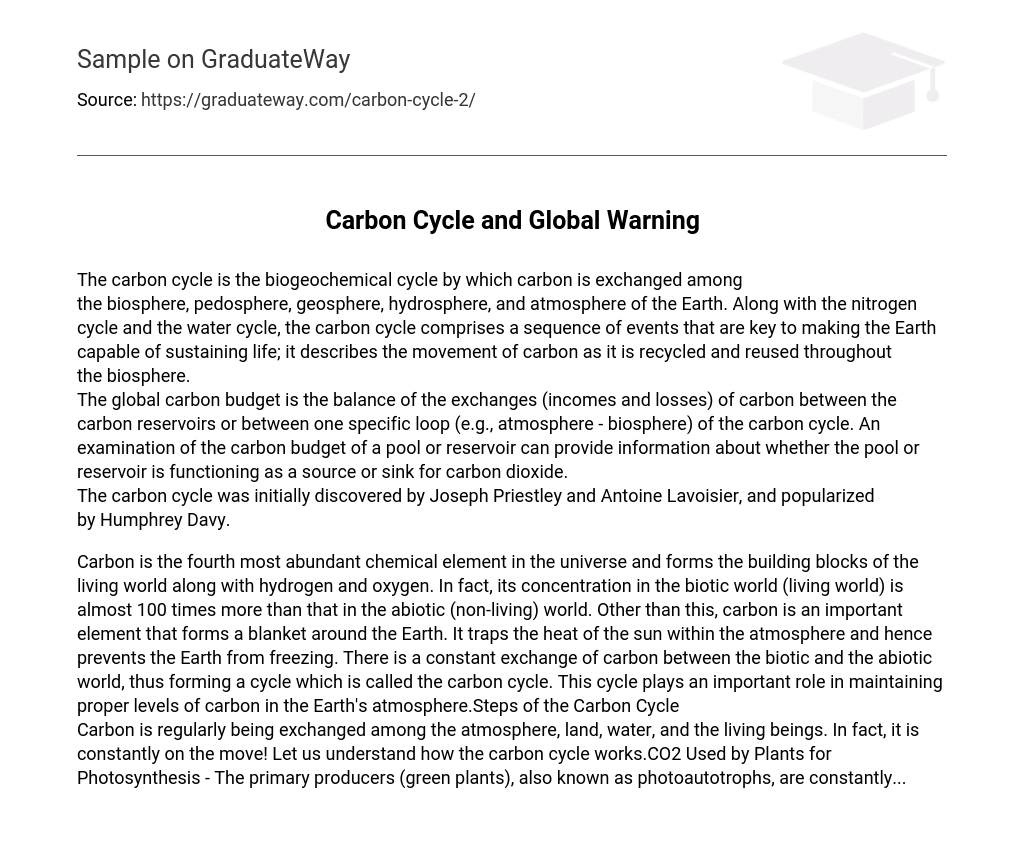The carbon cycle is the biogeochemical cycle by which carbon is exchanged among the biosphere, pedosphere, geosphere, hydrosphere, and atmosphere of the Earth. Along with the nitrogen cycle and the water cycle, the carbon cycle comprises a sequence of events that are key to making the Earth capable of sustaining life; it describes the movement of carbon as it is recycled and reused throughout the biosphere.
The global carbon budget is the balance of the exchanges (incomes and losses) of carbon between the carbon reservoirs or between one specific loop (e.g., atmosphere – biosphere) of the carbon cycle. An examination of the carbon budget of a pool or reservoir can provide information about whether the pool or reservoir is functioning as a source or sink for carbon dioxide.
The carbon cycle was initially discovered by Joseph Priestley and Antoine Lavoisier, and popularized by Humphrey Davy.
Carbon is the fourth most abundant chemical element in the universe and forms the building blocks of the living world along with hydrogen and oxygen. In fact, its concentration in the biotic world (living world) is almost 100 times more than that in the abiotic (non-living) world. Other than this, carbon is an important element that forms a blanket around the Earth. It traps the heat of the sun within the atmosphere and hence prevents the Earth from freezing. There is a constant exchange of carbon between the biotic and the abiotic world, thus forming a cycle which is called the carbon cycle. This cycle plays an important role in maintaining proper levels of carbon in the Earth’s atmosphere.Steps of the Carbon Cycle
Carbon is regularly being exchanged among the atmosphere, land, water, and the living beings. In fact, it is constantly on the move! Let us understand how the carbon cycle works.CO2 Used by Plants for Photosynthesis – The primary producers (green plants), also known as photoautotrophs, are constantly…





